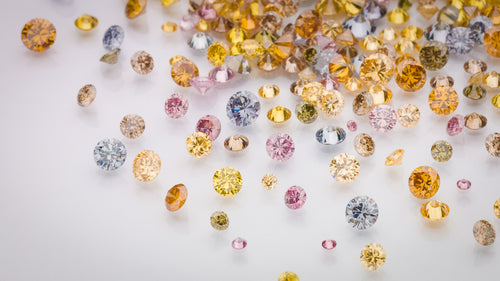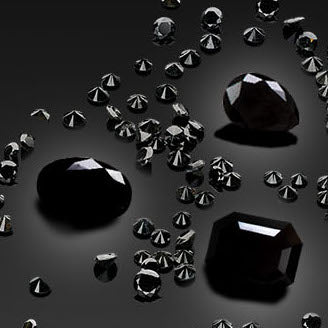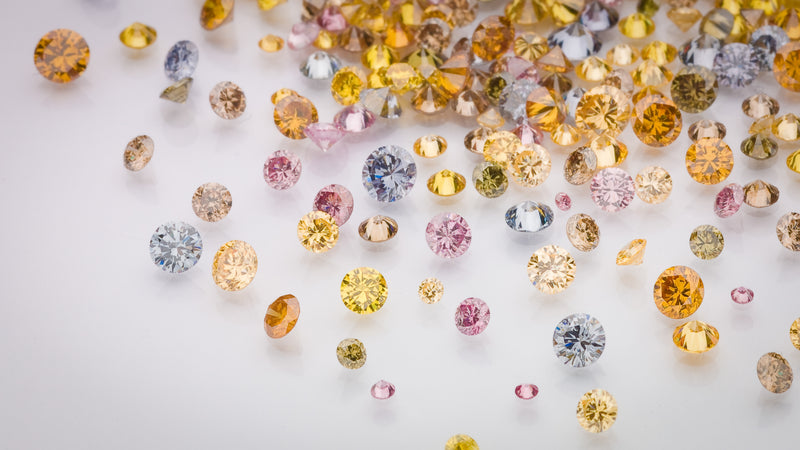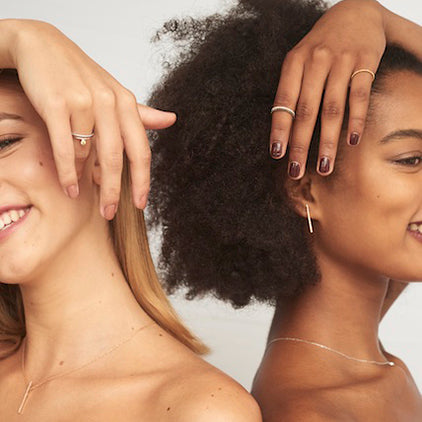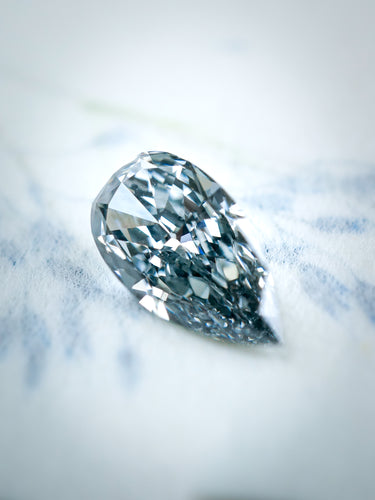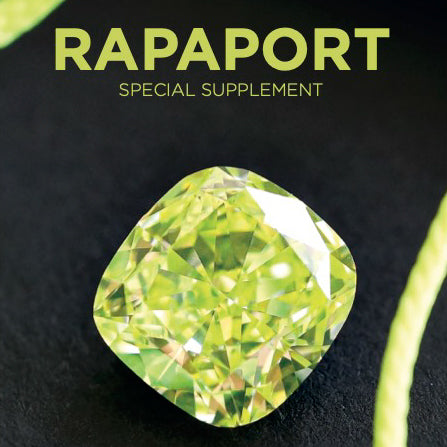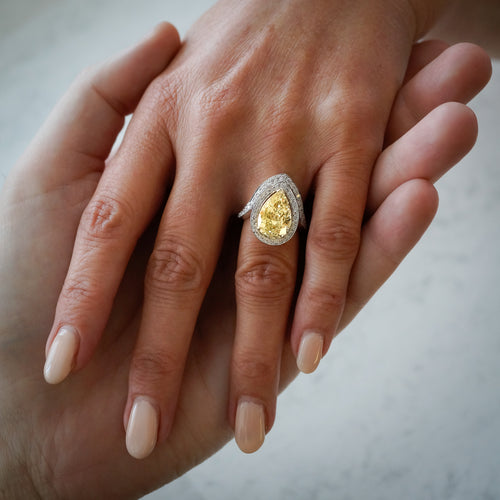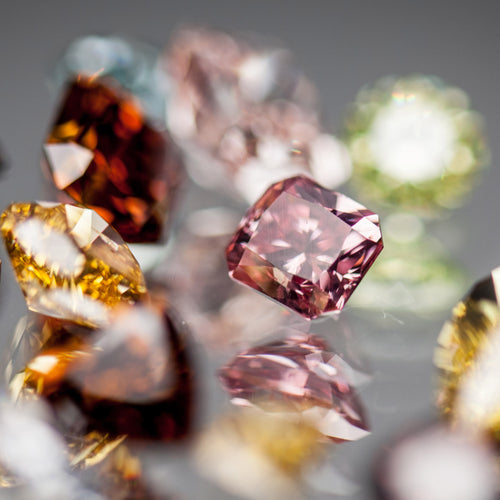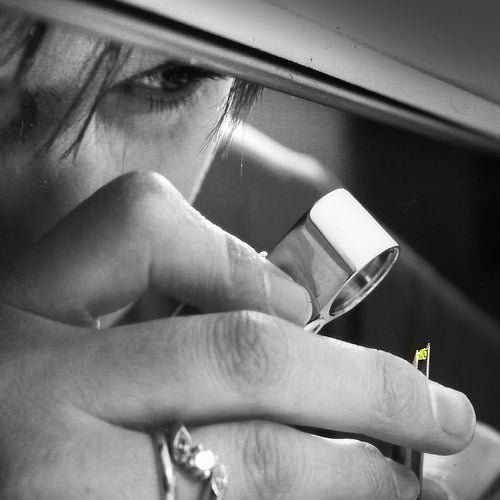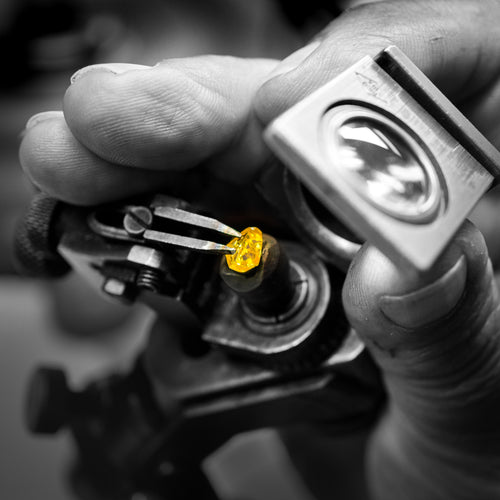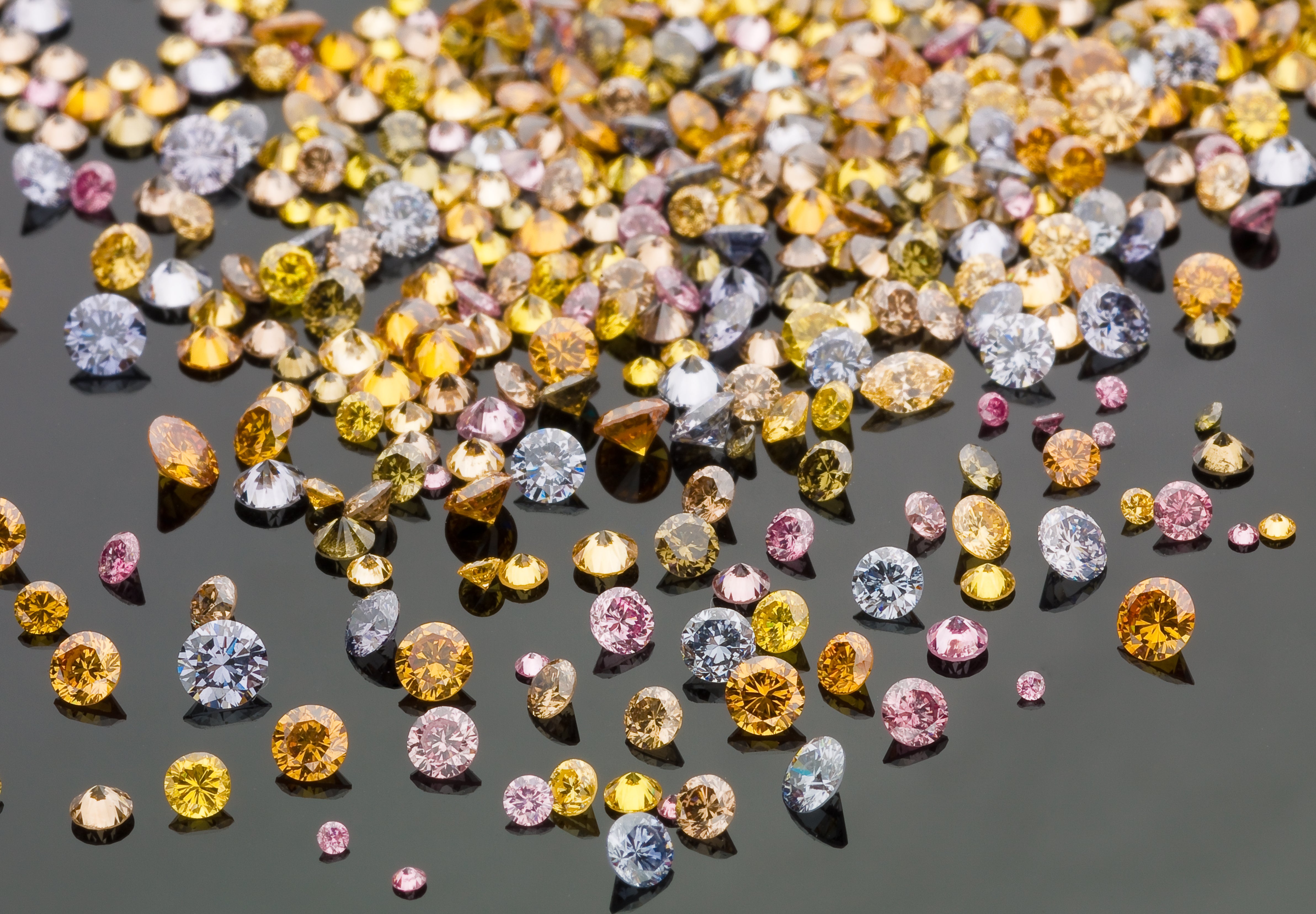
We have noticed that colored diamond grading is still a controversial subject among the main laboratories. This can be explained by the fact that the grading of color diamonds is still a recent field. Indeed, natural color diamonds were at first a minor occupation for the laboratories. But along with the prices raise and the needs of the market, these stones have gained some interest in their eyes. However, despite their efforts, laboratories still don’t have the same experience in colored diamonds as in colorless ones.
"There is no objectivity in the naming of a color."
Most charts try to analyze the colors scientifically. Unfortunately, we think this method is not adequate to express the infinite nuances of colors in the spectrum. A pumpkin color diamond will be called “orange-brown” and turquoise will be called “greenish blue”; some stones end up being given a series of colorful adjectives, such as “brownish green-orange-yellow” - with the end result that it is difficult to know a stone's color without having seen the stone itself. Moreover, it's a very limiting system: a “brownish pink” diamond could just as easily be old rose as burgundy.
Additionally, laboratories haven’t agreed on a common terminology, which makes things even more complicated. Indeed, there are obvious inconsistencies between laboratories when it comes to specific color names.
As an example, we have encountered the case of a stone that got graded “Fancy grayish blue” by one laboratory, and “Fancy intense blue” by another. It might look like a detail, but in fact, this makes a huge difference.
"There is a general consensus to avoid attributing certain color names to diamonds because they are highly priced."
Some laboratories are reluctant to deliver color names without a modifier term added to it. This is the case for red, purple, orange, and green stones. If these colors are almost never graded “straight” (without modifier), they are regularly found combined with the same hues. The most frequent combinations are: blue with gray, purple with gray or pink, orange with yellow, red with pink, green with yellow, brown or gray. Yet, these color nuances are not always perceived: the modifier only appears in the facets of the stone.
To us, the fact that the laboratories don’t use certain color names without a modifier has had a pernicious effect on the evolution of the market. The consequence is that some buyers don’t buy a stone, but a piece of paper: what they are looking for is a certificate that indicates a color with no modifier. For instance, an “orangy pink” stone is often considered less attractive than a “pink” stone. Why? This is a question we cannot answer because as diamantaires, we know that more subtle colors can be even more unique and extraordinary. And here, it is important to notice that the Hope Diamond, perhaps the most famous color diamond in the world, is graded “Fancy dark grayish blue”.
Grading Systems Vary According To The Colors of The Diamonds
The GIA states that depending on their rarity, not all color diamonds are graded the same way.
For example yellow, gray and brown colored diamonds, which appear more often with a strong saturation, require a greater depth of color to receive a “Fancy” grade. Thus, in comparison, a “Fancy” grade is given to a paler pink, purple or blue stone.
The fact that the saturation level is judged differently depending on the color of the diamond is very confusing. Indeed, the consumer can expect a comparable degree of saturation for a pink diamond and a yellow one.
On top of this, some laboratories like the GIA won’t mention any saturation level for a grayish or brownish colored diamond. This is obviously an additional issue that has a very negative impact on the objectivity of natural color diamond grading in general.
As a consequence, it is difficult for a diamond professional to explain to a buyer that an indigo colored diamond is also called “Fancy grayish blue”.

"Grading the color of colored diamonds is one of the greatest challenges in gemology. The description must be a thoughtful blend of both art and science."
All laboratories acknowledge the fact that color grading remains a subjective task. They rely on the expertise of their graders, but when they have too much work they are obliged to hire less experienced graders, which can result in inconsistencies.
Additionally, experienced as he may be, a grader is still a human being, and it is proved that the ability to perceive color variations differs from one person to another, and can depend on their physical state as well.
"We are some kind of artists."
The Issue of Clarity
Another issue concerns the clarity of specific colors: not all colors are equal regarding clarity. Indeed, some colored diamonds are nearly never seen without inclusions. This is the case for red and pink diamonds. These specific colors are believed to be caused by the extreme high pressures during their formation, which can produce inclusions. As a consequence, a SI and even an I1 pink diamond can be considered a very good clarity, contrary to yellow and blue natural color diamonds, which are generally purer. Amongst yellow diamonds, the ones from the Zimi mine in Sierra Leone are an exception: the rough stones characteristically contain an important black inclusion in their heart. Most of the time diamond-cutters try to remove it, but this means losing a lot of weight. This is all a matter of choice: either one sacrifices weight for clarity, or one favors weight, therefore keeping the inclusion. As for the cognac colored diamonds from Congo, they always have a cloud in their core.
Unfortunately, even if laboratories are generally consistent concerning clarity grading, they don’t communicate on these important specificities. The end consumer is then unaware that a SI pink or purple color diamond can be considered as excellent.
The Issue of Fluorescence
Most of the time, fluorescence is considered negative by the consumers because they base their argument on what is said about colorless diamonds. However, the case of natural color diamonds is completely different. Indeed, fluorescence is sometimes intrinsic to certain colors. As a matter of fact, some colors always fluoresce, like all the lime and mint colored diamonds and most of the pink diamonds.
As diamond professionals, we consider that fluorescence should influence the quality of the stone only it it has an impact on its brightness.
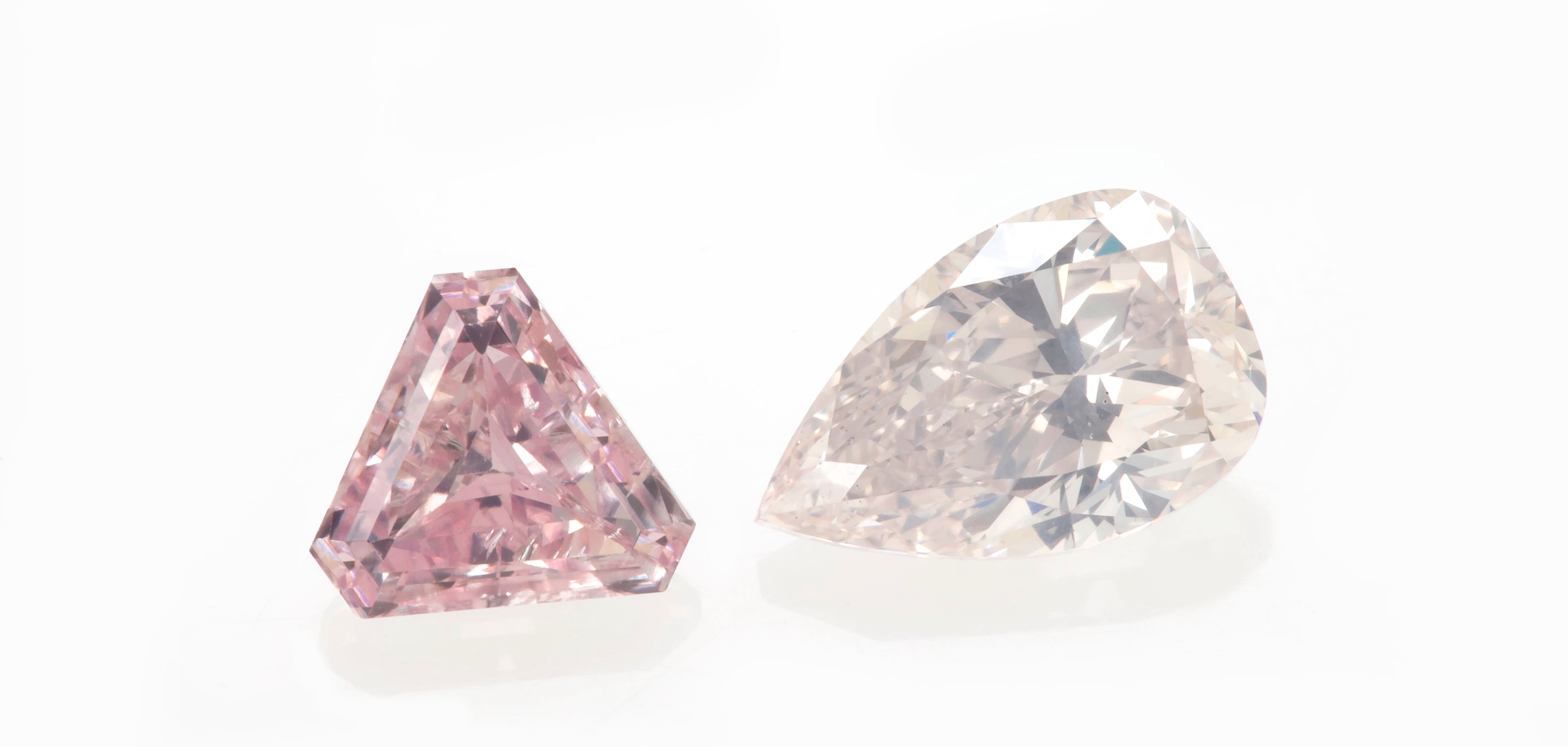
Undetermined Origin of The Color
Despite their efforts, laboratories are sometimes unable to determine whether a diamond’s color is natural or not. In that case, the word “Undetermined” is put on the certificate.
This makes the diamond unsellable and constitutes a real loss for the diamond dealer who, having usually purchased the rough stone as it came out of the mine, can be certain of the natural color of the diamond - unless it was treated in the rough. Even if treatments are hard to detect, there should be a relationship of trust between laboratories and diamond dealers. Unfortunately, this is not the case: even when graded by the same laboratory, it can happen that some natural colored diamonds (especially green colored ones) can suddenly become “treated”, without any justification. One can only hope that in the future, technological progress will allow us to establish the truth with more certainty.
Conclusion
Even diamond professionals struggle to understand a system which isn’t always consistent.
In general, the system is too complicated for everyone: for diamantaires, who are very few to be specialized in natural color diamonds, and for consumers who have no other choice than relying on the expertise of laboratories. One has to admit that these have done a good job in communication: they have set themselves up as inevitable references in the world of color diamonds. However, the same cannot be said about the communication towards the public and diamond professionals. As a consequence, all this is negative for the end-consumer who ends up being lost in the terminologies, and is the victim of a system which artificially raises the price of specific colors according to the market trends.
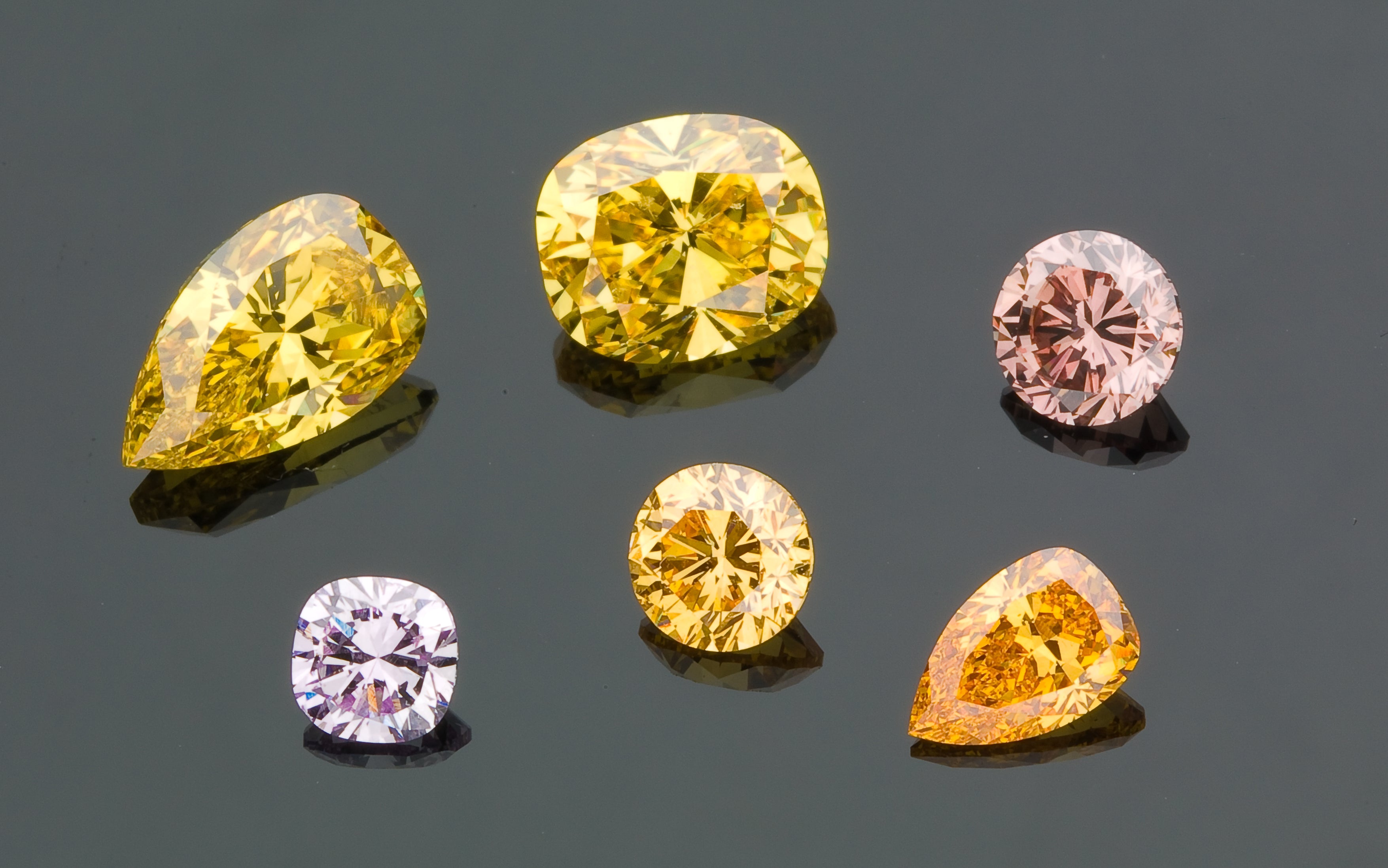
To conclude, all those issues have a negative impact on the industry of natural colored diamonds. Diamantaires like us don’t always feel supported by the laboratories even when they have a common interest. We think it would be definitely positive for the whole industry if laboratories collaborated with diamond professionals.
"Laboratories and diamantaires should work hand in hand for a better harmonization of color diamond grading."
Indeed, everyone has something to offer: the laboratories have the science and the diamond professionals have the experience and the everyday practice of diamond cutting.
